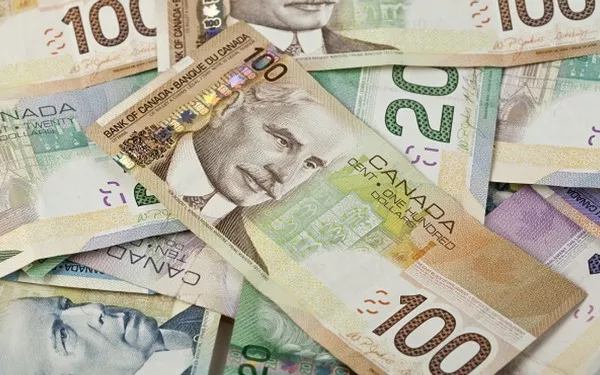The Canadian dollar is the official currency of Canada, but understanding its use and the different forms of dollars in circulation involves a deeper dive into the country’s financial system. This article explores the Canadian dollar in detail, including its history, the different types of dollars in use, and the broader financial context in which it operates.
Understanding the Canadian Dollar
Historical Background
The Canadian dollar (CAD) is the official currency of Canada, symbolized as “$” or “C$” to distinguish it from other dollar-denominated currencies. Its history dates back to 1858 when it was introduced as a British colonial currency. The Canadian dollar was initially pegged to the British pound and then to the U.S. dollar. In 1970, Canada adopted a floating exchange rate system, which allowed the Canadian dollar to fluctuate based on market conditions rather than being pegged to another currency.
The Canadian dollar is managed by the Bank of Canada, which plays a critical role in monetary policy, aiming to keep inflation low and stable while supporting economic growth. The Bank of Canada’s decisions on interest rates, currency reserves, and other monetary tools directly impact the value of the Canadian dollar.
Currency Symbol and Code
The Canadian dollar is commonly abbreviated as CAD in international financial markets. The currency symbol “$” is used in Canada, but to avoid confusion with other dollar-based currencies, “C$” or “Can$” is often employed in financial contexts. The ISO code for the Canadian dollar is CAD, which stands for “Canadian Dollar” in the International Organization for Standardization’s currency code system.
Forms of Canadian Dollars
Banknotes
Canadian banknotes are issued by the Bank of Canada and are available in several denominations. Each note features distinctive designs and security features to prevent counterfeiting.
The Canadian dollar banknotes are currently issued in the following denominations:
$5 Note: The $5 bill features a portrait of Sir Wilfrid Laurier, Canada’s seventh Prime Minister. It is primarily blue in color and incorporates themes related to Canadian history and achievements.
$10 Note: The $10 bill showcases a portrait of Sir John A. Macdonald, Canada’s first Prime Minister. It is purple and features images related to Canada’s natural beauty and cultural heritage.
$20 Note: The $20 bill features a portrait of Queen Elizabeth II, reflecting her role as the reigning monarch during much of Canada’s modern history. The note is green and includes various symbols of Canada.
$50 Note: The $50 bill features a portrait of William Lyon Mackenzie King, Canada’s tenth Prime Minister. It is red and includes images related to Canada’s economic development and national institutions.
$100 Note: The $100 bill showcases a portrait of Robert Borden, a former Prime Minister who led Canada during World War I. The note is brown and includes imagery associated with Canada’s contribution to the war effort.
Each banknote is designed with advanced security features, including holographic stripes, watermarks, and color-shifting inks, to prevent counterfeiting and ensure the integrity of the currency.
Coins
Canadian coins are issued in several denominations and are made from various metals. The primary coins in circulation are:
1-Cent Coin (Penny): Historically, the penny was a common coin in Canada, but it was discontinued in 2013 due to its low value and high production costs. The penny featured a portrait of Queen Elizabeth II and an image of a maple leaf.
5-Cent Coin (Nickel): The nickel is made from a blend of nickel and copper and features a depiction of a beaver, a symbol of Canada’s fur trade history.
10-Cent Coin (Dime): The dime is made from the same alloy as the nickel and features an image of the Bluenose, a famous Canadian schooner.
25-Cent Coin (Quarter): The quarter is made from nickel and copper and features the caribou, a symbol of Canadian wildlife.
50-Cent Coin (Half Dollar): The half dollar is less common in everyday transactions but features a portrait of the Bluenose schooner.
$1 Coin (Loonie): The $1 coin, commonly referred to as the “loonie,” features a common loon, a bird native to Canada. It is made from a brass alloy and is distinctive in both color and design.
$2 Coin (Toonie): The $2 coin, known as the “toonie,” features a polar bear and is made from a bi-metallic composition of nickel and aluminum bronze. It is designed to be easily distinguished from the loonie.
Currency in Financial Transactions
Domestic Transactions
Within Canada, the Canadian dollar is used for all forms of financial transactions. Whether it is for purchasing goods and services, paying wages, or conducting business, transactions are carried out using CAD. The Canadian dollar’s value is influenced by domestic economic conditions, including inflation rates, employment levels, and economic growth.
Canada’s financial system supports a range of payment methods, including cash, debit and credit cards, and electronic transfers. The widespread use of digital payment systems has increased the convenience of transactions, allowing Canadians to conduct financial activities with greater ease.
International Transactions
In international transactions, the Canadian dollar is used in trade and investment activities with other countries. As a major global currency, the CAD is involved in numerous international trade agreements and financial transactions. The exchange rate between the Canadian dollar and other currencies, such as the U.S. dollar, euro, and yen, plays a critical role in determining the cost of exports and imports.
Businesses engaged in international trade often use foreign exchange markets to convert CAD into other currencies and vice versa. Exchange rate fluctuations can impact the profitability of international transactions, and businesses may employ various hedging strategies to mitigate risks associated with currency volatility.
Currency Exchange and Foreign Exchange Markets
The value of the Canadian dollar relative to other currencies is determined by the foreign exchange (forex) market, where currencies are traded globally. The CAD’s exchange rate can be influenced by various factors, including interest rates, inflation, economic performance, and geopolitical events. Exchange rate fluctuations impact the cost of importing goods, traveling abroad, and investing in international markets.
Forex traders and financial institutions monitor exchange rates closely to make informed decisions about currency trading and investment. The Bank of Canada also plays a role in the forex market by conducting monetary policy operations to stabilize the Canadian dollar and manage inflation.
See Also: Where Can I Get Canadian Money?
Economic Implications of Currency Value
Impact on Trade
The value of the Canadian dollar has significant implications for Canada’s trade balance. A stronger Canadian dollar makes Canadian exports more expensive for foreign buyers, potentially reducing demand for Canadian goods and services. Conversely, a weaker Canadian dollar can make exports more competitive in international markets, boosting demand and supporting economic growth.
Imports, on the other hand, become more expensive when the Canadian dollar is weaker, which can lead to higher costs for businesses and consumers. Companies that rely on imported goods and raw materials may face increased production costs, which can affect their profitability and pricing strategies.
Effect on Inflation
Exchange rate fluctuations can also impact inflation rates in Canada. A weaker Canadian dollar can lead to higher import prices, contributing to increased overall price levels and inflation. This effect can be particularly pronounced in sectors that rely heavily on imported goods, such as consumer electronics and fuel.
Conversely, a stronger Canadian dollar can help keep inflation in check by reducing the cost of imports. However, the relationship between exchange rates and inflation is complex, and other factors, such as domestic economic conditions and monetary policy, also play a role in determining inflation rates.
Currency in Investment and Financial Planning
Investment Strategies
For investors, understanding the value of the Canadian dollar is crucial for making informed investment decisions. Currency fluctuations can impact the returns on investments, particularly those involving foreign assets or international markets. Investors may use currency hedging strategies to manage exchange rate risk and protect their portfolios from adverse currency movements.
The value of the Canadian dollar can also influence decisions related to real estate investments, foreign stocks, and bonds. Investors seeking to diversify their portfolios may need to consider the impact of currency fluctuations on their investments and adjust their strategies accordingly.
Financial Planning
In financial planning, the value of the Canadian dollar affects budgeting, savings, and retirement planning. Individuals traveling abroad or making purchases in foreign currencies need to consider exchange rates and their impact on their overall expenses. Financial planners often advise clients on strategies to manage currency risk and optimize their financial goals based on current and anticipated exchange rate trends.
Conclusion
The Canadian dollar is the primary currency used in Canada for all financial transactions, both domestic and international. Understanding the nuances of its value, including the historical context, various forms of currency, and economic implications, is essential for individuals, businesses, and investors.
The CAD’s value relative to other currencies is influenced by a range of factors, including interest rates, inflation, economic performance, and global events. By staying informed about these factors and monitoring exchange rates, individuals and businesses can make more informed financial decisions and navigate the complexities of the global economy effectively.
Related Topics:



























